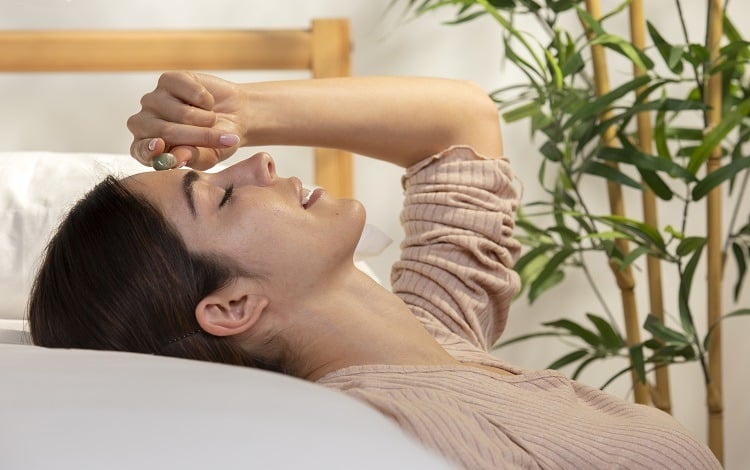Do you remember the childhood times when you would spin around and around on the playground till you felt dizzy? And even when you stopped turning, it felt like everything around us was still spinning, making you lose balance. Well, that exactly sums up how it feels to experience Vertigo. The difference is that you get that dizzy and imbalanced feeling without any merry-go-round or spinning.
Vertigo is a common problem reported by individuals during hospital appointments. Almost every one of us has probably experienced a few seconds of disorientation or dizziness at some point. However, regular episodes of Vertigo – be it for a few seconds or days on end, are a prominent sign of vestibular dysfunction. The most frequent type of Vertigo is benign paroxysmal positional Vertigo (BPPV), defined by the sense of motion caused by abrupt head movements or moving the head in a specific direction. BPPV affects about one in every five people who experience dizziness. This figure rises among the elderly or vulnerable groups. This condition is mainly triggered by specific changes in your head’s position. If you are wondering how being dizzy differs from having Vertigo, let us explain the difference – Dizziness is a feeling of being light-headed, faint, or unsteady. Vertigo, as opposed to dizziness, involves a rotational, spinning component and is the feeling of movement, either of the self or surrounding things.
What causes Vertigo? Vertigo episodes are triggered by the inherent impairment in the balance of the body due to defects in the inner ear. Now you might be wondering how inner ear defects can make you dizzy. Well, your inner ear is responsible for maintaining the body’s stability while walking, working, running, hiking, climbing stairs, or even seated. So, patients suffering from conditions such as Benign Paroxysmal Positional Vertigo (BPPV), Meniere’s disease, or vestibular neuritis may have infections that clog the inner ear with fluids, leading to feeling weak and fainting.
Treatment for Vertigo is determined depending on the exact symptoms, extent, and frequency of episodes. No specific treatment is usually required for mild Vertigo conditions trigged by sudden head movements. However, people with acute cases of Vertigo often suffer from adverse symptoms such as nausea, vomiting, migraines, and fatigue, which demand immediate attention and treatments. If you are looking for an effective yet long-term solution for treating Vertigo, then it is time to follow the Ayurvedic approach.
The timeless practice of Ayurveda offers sustainable and natural solutions for mending different neural conditions. The nervous disorder Vertigo is defined as ‘Bhrama’ in Ayurveda, resulting from an imbalance of Vata and Pitta dosha. Vertigo treatment focuses on restoring the energy balance and improving the patient’s overall well-being. When your body’s energy balance is in equilibrium, all the processes will work smoothly and optimally. However, when the equilibrium is upset, it produces irregularities in the functions of numerous organs and systems, which leads to illness. Each Dosha has specific foods that can ease it and restore balance. Instead of treating yourself with half-baked knowledge, it is important to consult a qualified Ayurveda doctor to assess your symptoms, detect their cause and determine the treatment of Vertigo.
Consultation with an Ayurvedic practitioner will help you gain a better insight into your medical condition and symptoms. After a detailed diagnosis, the Ayurveda doctor would instruct you on mandated changes in your lifestyle, diet, and more. It will be combined with various herbal remedies, massage therapies, yoga practices, and Ayurvedic therapies. When it comes to food habits, it is always best to stick with a light but nutritious and balanced meal with few seasonings and spices. Green leafy vegetables and fruits are recommended because patients should limit their salt intake and eat carefully. Meditation, yoga practice, and specific asanas also benefit the healing process. Another significant aspect of Vertigo ayurvedic treatment is the removal of toxins from the body, which is accomplished by using various treatments such as herbs and medicated oils, as well as procedures like marma chikista, Shirodhara, panchakarma, etc.
Vertigo Ayurvedic Treatment at Swasthya Ayurveda
Whether you are experiencing symptoms of Vertigo, migraine, or any other neural disorder, it is critical to consult a medical professional for an accurate diagnosis. A simple online search for ‘Ayurveda massage near me‘ may fetch unlimited results. But before you book the massage or plan the visit, consulting a qualified Ayurvedic doctor and discussing your health conditions and concerns is essential. Swasthya Ayurveda and Wellness Centre have an experienced team of skilled Ayurveda practitioners and massage therapists who can offer the best services and solutions. “Our goal is to maintain and promote health and wellness, prevent illness, and cure diseases using time-tested methods and practices as put forth by Ayurveda,” says Dr. Divya Menon, a veteran in Ayurvedic medicine. With over 11 years of experience in the Ayurveda practice, Dr. Divya Menon is capable of handling any medical issue with utmost patience and superior skill.


